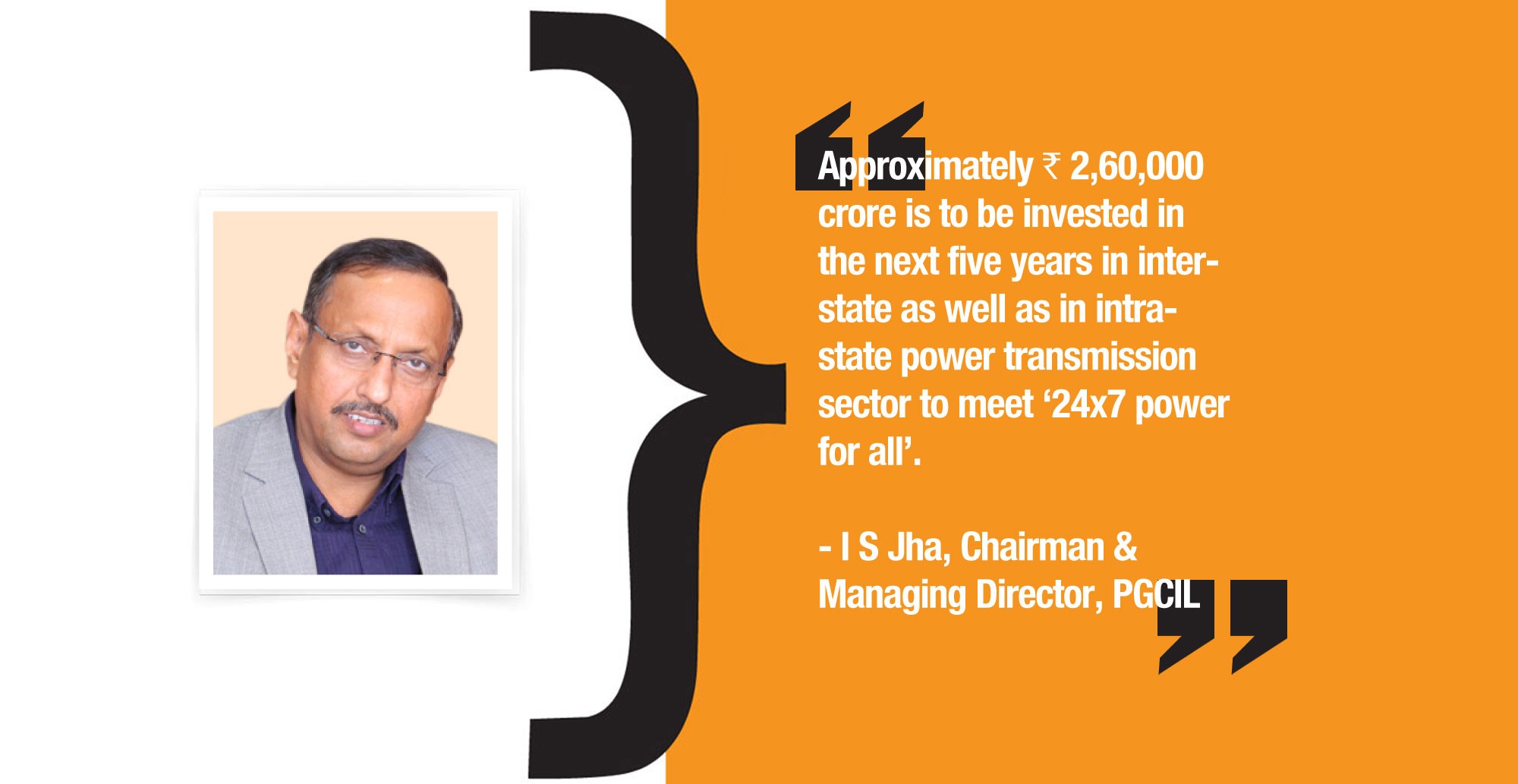Prepping for ‘power for all’
By EPR Magazine Editorial March 9, 2017 2:53 pm IST
By EPR Magazine Editorial March 9, 2017 2:53 pm IST

Approximately Rs 2,60,000 crore is to be invested in the next five years in inter-state as well as in intra-state power transmission sector to meet ‘24×7 power for all’.
– I S Jha, Chairman & Managing Director, PGCIL
In an exclusive interaction with Kshitija Kolhapure, I S Jha, Chairman & Managing Director, PGCIL speaks on wide array of topics including innovative technologies, green corridors, ongoing projects and POWERGRID’s readiness for ‘power for all’. Excerpts:
POWERGRID posted a net profit of Rs 1,930 crore in the Q3 of FY 17. What is your target for the next quarter?
Our performance has been excellent not only in this quarter, but earlier quarter too there was 20 to 30 per cent growth. We expect the same to continue with the future quarters as well.
What are the major projects POWERGRID is presently part of?
The (±) 800-kV HVDC line between Champa in Chhattisgarh and Kurukshetra in Haryana, the 765-kV double circuit line from Raipur to Wardha, and 765-kV double line Wardha-Hyderabad line are some of the major projects we are doing.
ABB recently teamed up with POWERGRID to deliver long distance transmission links. How will be the workability and by when we can expect the grid in operation?
The project involving HVDC link between Western Region Grid (Raigarh, Chattisgarh) and Southern Region Grid (Pugalur, Tamil Nadu) is very important. The basic benefit of this project is that it is going to give bulk power from the Chhattisgarh which is the generation surplus area to the demand intensive southern region.
The JV of ABB and BHEL shall be executing the terminal part which is costing about Rs6,000 crore and they have started working from 20th December 2016. We are planning to commission it in 2019.
What are the state-of-the-art technologies been used to strengthen the transmission line?
Recently we have completed the first phase of 1,730-km-long (±) 800 kV HVDC transmission line of 6,000-MW capacity between North-East region and Agra. To strengthen the transmission system we are implementing technologies like static synchronous compensator (STATCOM) and large capacity Static VAR Compensators (SVC) which works as a shock absorber. In addition we are striving to make grid smart by installing the Phasor Measurement Units (PMUs) and Wide Area Monitoring Systems (WAMS). We are also upgrading our control centres by making them remotely operated.
Is the power transmission line in India good enough to provide ‘power for all’ in the coming years?
Yes of course. We are working on that. Today’s transmission lines are certainly good enough and it needs continuous augmentation to meet future requirement.
How green corridors are going to help the power sector?
Green corridors are planned for the green energy. The major challenge was to develop the transmission matching with the generation. It means that Government of India has to develop the infrastructure of transmission systems beforehand so by the time it plans solar power, transmission lines should be there that is why green corridor has to be made in advance and it has been planned for potential areas like Kutch and Rajasthan so that whatever generation comes it can be hooked up.
Since solar sector is growing rapidly, what are your views on grid connectivity for solar sector?
The government has planned 175 GW by 2022 and out of that 100 GW of solar power to be generated by 2022. Basically there are 3 types of solar coming up: Firstly, 20 GW through ultra-mega solar parks, secondly, 40 GW through utility-scale solar plants, and thirdly 40 GW through distributed rooftop projects. We don’t need transmission system for rooftops but we need transmission system for the solar parks where the capacity ranges from 500 to 2,000 MW. Then there are 9 numbers of solar parks which have been planned to be inter-connected to the main grid and out of this for 8 we are making the transmission systems and all are going well.
We use cookies to personalize your experience. By continuing to visit this website you agree to our Terms & Conditions, Privacy Policy and Cookie Policy.